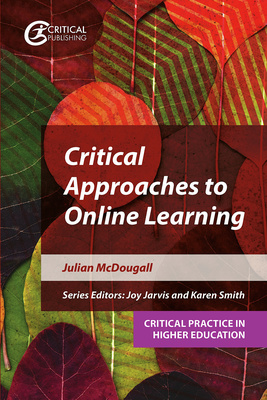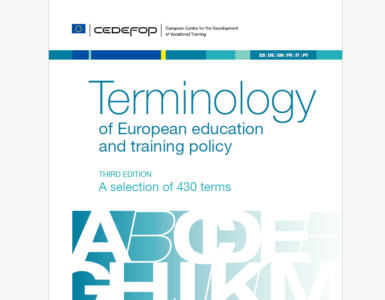By Julian McDougall, Centre for Excellence in Media Practice (CEMP), UK

Last year, I published ‘Critical Approaches to Online Learning’, with Critical Publishing. When covid arrived, I had already been involved in teaching on online or blended programmes for eight years. In the centre I lead (CEMP, at Bournemouth University), we suddenly found ourselves in demand, being asked to advise colleagues with managing the rapid response to closed campuses and the ‘pivot’ to virtual teaching. The book was partly that, but partly about how it’s more complicated.
We were, of course, happy to help people make this stressful transition, but we experienced a tension between these requests for ‘how to’ and our lived experiences of the ‘why’ and all of the complexities in the virtual learning space that make it hard to offer quick-fix solutions or one size fits all models for best practice. These complications include every single student having a unique socio-material situation, ideas about learning design for ‘third space’ knowledge exchange.
But also there was a sense of starting out from the wrong place. When online teaching and learning works well, it’s because people have signed up for it, so we are not operating with a deficit model of what we are doing and where we are being a supplement to or a virtual version of ‘the campus’. Instead, we understand the virtual space to be in itself a ‘de-situated’ campus or ‘we, the campus’ – so it’s about people, buildings. And if that’s not enough, then what about the politics, economics and geo-cultural aspects of what we are doing when we teach online, questions like who owns the platform, what forms of surveillance will we tolerate (or even desire), how can we ensure diversity and inclusion in our practice and what opportunities might online learning provide to do this better, actually?
So, at the risk of sounding unhelpful, when the entire community of practice was desperate for help, for the ‘how to’, it was crucial to also be saying, ‘well, it’s complicated’. These are critical questions, for critical practice, and hence the locating of the book in a series with this framing.
The book starts out with configurations of time, space, machines and people and how these elements are always-already ‘in play’. Then it moves on to discuss how people work in relational virtual practices, not thinking about online relations as being a version of something ‘real’, but maybe as ‘more than human’. Assessment is the subject of the next chapter, followed by the project of decolonising the online curriculum and the book concludes with a recorded panel in which I asked a group of key thinkers in the online learning world to think about their work in the frames of reference from John Henry Newman’s ‘The Idea of a University’.
It is important to say that often in this book I am collating, synthesising and curating others’ research and practice. I was attempting to bring together the most important learning from pre-covid and situating the pandemic experience in that, as well as projecting forward to the ‘new normal’ and various futuring discourses for the ‘post-pandemic university’. And there are provocations around that – rather than clamour for a return to business as usual, might the virtual learning environment help us get closer to Newman’s ethical, values-driven vision of higher education than the neo-liberal university?
The objective is to challenge the reader to think critically about online learning but also to raise questions for practice, so it’s not just rhetorical, it should also work as a guide, of sorts. The book opens with this quote:
“ When distance once again becomes a choice, not a necessity, we will collectively be in a better and more informed position to understand it as a positive principle in many contexts.” (Bayne et al, 2020, pxix).
Now that we are free from lockdowns and restrictions, hopefully for good, we have gone back to making decisions about where to be and how to teach – face to face, blended or asynchronous. On the other hand, understandably, as we have been through such collective trauma, there is more of a desire to forget and go back than a more joined up, reflexive consideration of our options, as Bayne predicted. I hope we can get to that point, in time and that my book can, when we are ready, contribute to this sense of greater confidence, this more secure, more informed relationship with online learning as a way of being in HE, a pedagogic design choice, rather than a ‘force majeure’.

Author
Julian McDougall, Head of the Centre for Excellence in Media Practice (CEMP), UK














